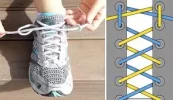It is all down to personal preference.
Imo there is no need for boots from Le Puy, but then I would say that as I generally do not wear boots

I prefer trailrunners, or will use regular trainers if I cannot get the trailrunners that I like. I will wear boots if I know that I'll be walking in snow/freezing conditions for an extended period of time, but only then.
My reasons for avoiding boots are:
they are heavy
they need walking in
if they get wet they take ages to dry out
they are hot
I generally find the soles too stiff
The only benefit I can see is extra ankle support...
I'm also amongst those that believe that trailrunners/trainers do not need to "broken" in. I have replaced them "on the road", left my old ones in the shop and continued with the new ones and had no problems. I tend to get mine a size larger than what I usually do, as this also allows me to use sealskinz (waterproof socks), and allows for feet to swell up a bit during the day.
Whilst some brands have better reputation than others, it does not matter if their shoes/boots do not fit you. Likewise if 1 model in a brand does not fit your feet, another model might. Keep trying until you find one that fits you well.
If I'm trying on a new model/brand I also bring my socks along as different sock combinations can significantly alter the way the shoes fit/feel.
I used to like to Montrail, currently I mainly use Saucony or Salomon, as I have found those to fit my feet best, and not needing to be walked in
























